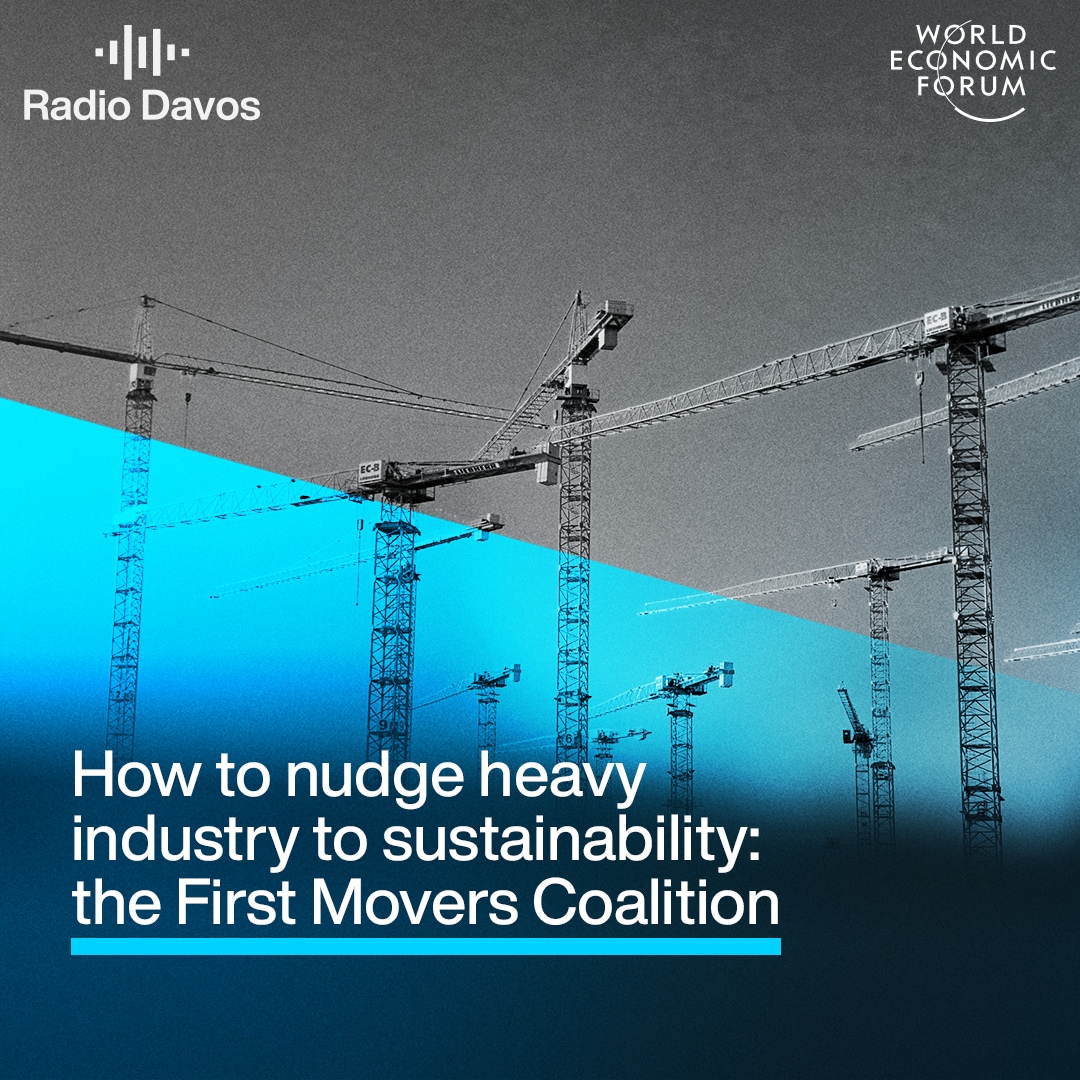How early warning systems and parametric insurance can build climate resilience in Africa

Over the last two decades, Africa experienced the highest number of deaths from drought.
Image: Creative Commons: Oxfam East Africa.
- Up to 60% of the over 1.2 billion population in Africa is not protected by early warning systems.
- Improvements in risk modelling and disaster preparedness have significant implications for strengthening climate resilience in Africa.
- Parametric insurance is a type of insurance that pays out when predefined triggers are exceeded, such as a certain weather triggers.
- The US Government has entered a $11.7 million partnership with ARC Ltd. to increase access to parametric insurance and safeguard smallholder farmers.
As climate change intensifies, the need for more reliable and accurate weather monitoring systems and innovative financing mechanisms in Africa is becoming increasingly urgent. Despite the significant risks posed to vulnerable populations and economies by the increase in extreme weather events – the continent has the world's least developed land-based weather observation network. Additionally, around 60% of Africa’s over 1.2 billion population remains unprotected by early warning systems, according to the World Meteorological Organization (WMO).
Weather monitoring systems provide vital data that assists with identifying weather patterns, developing risk models that predict the possibility of severe weather events, determining the vulnerability level of communities and informing risk mitigation and post-disaster response.
Investment in these systems is recognised in most African countries as a key priority of the National Adaptation Programmes of Action and the National Adaptation Plans. However, the systems and technologies that monitor and forecast weather events are either absent, outdated or poorly maintained. WMO data shows there are only 37 unevenly distributed radar stations in Africa. As many as half of these cannot provide accurate data to forecast weather patterns for a few days or even hours. The lack of reliable data therefore has dire consequences for lives and economies.
In a 2023 paper titled How to reduce Africa’s undue exposure to climate risks, risk experts and climatologists from the UK and Africa warned that without fast and significant upgrades to hydromet infrastructure, the loss of life will “balloon”. They also stressed that well-funded weather monitoring and early warning systems must become a priority.
The impact on Africa
The experts reference research showing that over the last two decades, the average number of deaths caused by flooding events in Africa is four times higher than in Europe or North America. Furthermore, Africa experienced the highest number of deaths from drought, despite only experiencing half of the globally reported droughts during that period.
In September 2023, Libya lost more than 4,300 people to flooding due to a lack of early warning systems and evacuation planning, combined with poorly maintained infrastructure. At least 180 people have died in floods and landslides in Kenya since the rainy season began in mid-March 2024, with hundreds of thousands forced to leave their homes. In Tanzania, over 155 people have died, and at least 200,000 have been affected by flood damage.
How is the World Economic Forum fighting the climate crisis?
In contrast, the Eastern and Southern Africa region has been buckling under a severe drought which has devastate crops during the growing season and threatened food security. The drought is said to be caused by the El Niño weather phenomenon. In a joint statement, the United Nation’s (UN) Food and Agricultural Organization (FAO) and the World Food Programme (WFP) pointed out that after several droughts, Malawi is now "experiencing the worst food insecurity in a decade", as 90% of cultivated land in the country is rain-dependent.
The two agencies estimate that 27.4 million people in Southern Africa will face hunger in the next six months due to poor harvests following a series of 14 extreme droughts within the past two decades. The broader implications of the El Niño weather pattern were also highlighted by the UN’s Global Report on Food Crises, produced by the Global Network Against Food Crises, which stressed that the worst is far from over. "Its full impact on food security — including flooding and poor rain in parts of East Africa and drought in Southern Africa, especially Malawi, Zambia and Zimbabwe — are likely to manifest throughout the year," the report said.
Accept our marketing cookies to access this content.
These cookies are currently disabled in your browser.
How parametric insurance offers a solution
Early warning systems and parametric insurance are important complementary tools for disaster risk management. While early warning systems collect data from weather monitoring stations and satellites, parametric insurance bridges the finance gap between African nations and their ability to fund early warning systems. Based on predefined triggers, such as low rainfall levels providing early warning of an impending drought, and offering coverage for losses that are difficult to model, parametric insurance provides timely financial responses to natural disasters. Accurate early warning data informs the probability of a hazard and assists with setting accurate payout amounts.
African Risk Capacity (ARC) uses Africa RiskView – a satellite-based system – to monitor weather patterns and trigger payouts when a parametric index is exceeded. Translating predictive weather models into programmes to support farmers or disaster response activities, however, requires additional financial support. Recognising this, the US Government has entered a three-year, $11.7 million partnership with parametric insurance provider and ARC’s financial affiliate, African Risk Capacity (ARC) Ltd. Their joint project aims to protect food security across Africa and increase the capacity of governments to support climate resilience among their smallholder rain-fed farmers through the provision of parametric insurance mechanisms.
There are several critical components to this partnership. The company will customise risk models for each country and work closely with governments to integrate parametric insurance into their policy frameworks, assist them in the effective use of parametric insurance and formulate contingency plans. ARC Ltd. will also be developing innovative localised products to meet the evolving requirements of individual countries and the real needs on the ground.
Enhancing risk modelling, data collection, and analysis is another key intervention. To this end, agricultural seasons will be monitored jointly with the countries to identify areas of high disaster risk and to calculate payouts based on the estimated impacts. End-of-season reports will be issued for all countries, and post-disaster monitoring conducted to ensure that payouts received are utilised in accordance with pre-agreed implementation plans (part of the contingency planning process).
This comprehensive monitoring will assist ARC Ltd. in the refinement of the Africa RiskView (ARV) software and risk indicators while identifying gaps. Additional datasets and conducting in-country verification of results will also take place. While drought, flood and tropical cyclone models have already been launched, further refinement will be undertaken.
To address the uptake of parametric insurance, ARC Ltd. will be driving engagement with the African Union and regional economic communities to encourage adoption.
The partnership between the US Government and ARC Ltd. represents a significant step towards building climate resilience and elevating the potential of parametric insurance as Africa’s safety net. With only $0.47 of every $100 spent on global development aid being channelled towards disaster risk reduction, innovative and collaborative efforts such as this are essential for safeguarding the future of the continent.
Accept our marketing cookies to access this content.
These cookies are currently disabled in your browser.
Don't miss any update on this topic
Create a free account and access your personalized content collection with our latest publications and analyses.
License and Republishing
World Economic Forum articles may be republished in accordance with the Creative Commons Attribution-NonCommercial-NoDerivatives 4.0 International Public License, and in accordance with our Terms of Use.
The views expressed in this article are those of the author alone and not the World Economic Forum.
Related topics:
Forum Stories newsletter
Bringing you weekly curated insights and analysis on the global issues that matter.
More on Climate ActionSee all
Elizabeth Henderson
September 16, 2025
Cornelius Pieper and Nicky Collins
September 15, 2025
Lindsey Hall
September 15, 2025
Joe Myers
September 12, 2025
Emilian Axinia
September 11, 2025





